Employees
Below features workers from the former Woollen Mill and their stories about their time at the Mill.

J Jeremiah Amor
Worked in lab making colour – worked with clients to decide colour – adjust after dying Tested textiles for quality after production Assist in dying production

Jeremiah Amor
Worked in lab making colour – worked with clients to decide colour – adjust after dying Tested textiles for quality after production Assist in dying production
Years Employed at The Mill: 1989 - 1992 (3 years)Relatives/Friends: Parents John & Virginia Amor & Sister Cherie Amor 12 – 20 people worked in dye house. Left because Mill going to Albury – Pat pulled him aside to tell him about a month before advising him to apply for jobs in Melbourne. Offered a job in Albury but took a job in Melbourne. Pleasant memories – drinks at Lady Bay Hotel. 19 YO when started –When hung over slept in wool stores (cellars) next to dye store. Pat very tolerant of discretions. April Fool’s Day – needed to be on toes all day – someone had to outdo last year’s pranks – glad wrap on toilet, tampering with lunch in fridge, fun with chemistry (a little dangerous) - crackles and sparks….involved in pranks Whistle reminded him he was late for work or late back from lunch. Chemicals from dye house released into river. No treatment plant. Highly acidic, highly caustic chemicals poured down drain - soda ash, caustic soda, acetic acid (vinegar), colour Would have stayed at Mill if kept going. Good with keeping equipment clean, wearing masks etc. If no mask you could be violently drunk and vomiting on ethanol – pure alcohol. Mill was first full time job allowing me to be independent. My favourite memories of working at the Mill were meeting people, sleeping on the wool bales when hungover from the Lady Bay or the Gallery the night before. Very sociable community at the Mill- Christmas Parties, drinks on special occasions and other friendly gatherings. I left the Mill in 1992 as I was advised by Pat (my boss) that I should look for more Dye House work in Melbourne as the Mill was starting to wind down. I always felt that the Mill was a great place to work.

T Ted Bain
Winding

Ted Bain
Winding
Years Employed at The Mill: 1980 - 1986 (6 years) Relatives/Friends: Mother-Eileen Lane, Sister-Mary-Ellen Osborne, Brother-Gene Lane, Ian Chislett Shift work 7.00- 3.30 alternating with 3.30 till midnight. Mill shut down at Xmas for 4 weeks. Break up day after cleaning up your area you could be having a beer at 10.00am waiting for Timmy Dawson to arrive with holiday pay in cash. Very cold in winter and over 55 degrees inside in summer. Great Friendships.

C Carol Boyd
Winding

Carol Boyd
Winding
My sister also worked at the Mill around the same time as me – Loran Haberfield (1963). One of the characters I remember is Frank Higgins – he always appeared grumpy, but was really a nice person. At the end of the shift we would have our area all cleaned up waiting for the whistle to blow – so we could leave for home. My least pleasant memories at the Mill were the noise and dust. I enjoyed the break up dinners at the Lady Bay Hotel I left the Mill to start a family in 1966.

M Max Coomber
Assistant Foreman/Yarn Store Manager

Max Coomber
Assistant Foreman/Yarn Store Manager
Relatives/Friends: Father-Max Coomber, Mother-Gert Coomber, Brother-John Coomber, Grandmother-Ethal Hocking, Uncle-Clive Hocking, Great-uncle-Jim Watson
Good workmates. Lots of joking and fun. Closed the door on the last day. Received a gold watch for 25 yrs service. Staff gathered in the carpark. 2 weeks holidays at Xmas originally. Then 1 extra week in Sept. EventuallY 3 weeks at Xmas. Freezing in Winter Hot in Summer. Children’s Xmas party finished 1975. Gifts for all employees at Xmas. Whistle used as a timekeeper all over town.

P Peter Goodman
Washed for Controlled Shrinkage/Dennis Jervis’s Leading Hand

Peter Goodman
Washed for Controlled Shrinkage/Dennis Jervis’s Leading Hand
Years Employed at The Mill: 1986/7 - 2000 (13/14 years) Relatives/Friends: Grandparents – Thomas & Margaret Goggin, Father – Stewart Goodman, Aunt – Heather Goodman My first job was working in the Cutting Room at Fletcher Jones & Staff. After returning from travels to WA I commenced work at the Mill working under the management of Dennis Jervis running all machines in the wet and dry departments. I washed for controlled shrinkage. I worked with the rollers and big spinner. The fabric came to us already dyed and woven. Later I became Dennis Jervis’s leading hand working on brushes, cutters, blowers and the dispatch of fabric. We made the rubber backing on the Billabong rugs. It was fun being at the factory but the work was boring at first. I waited two hours after putting the fabric in the mills which was monotonous. However it served its purpose as a fill-in job. I rode a bike to work. I made good friends, some of which I still have today.One spool was a couple of kilos, with sharp ends, called shuttles. They moved with great speed across the fabric. A shuttle could fly off a machine. I don’t remember the work so well but I remember the people. We played touch football at Lake Pertobe after hours and on weekends. Playing touch football was started by the New Zealand boys. Some women played. My father worked at the Mill in weaving. His father Thomas Goodman worked in cards. My aunty Heather Goodman worked there. Mum’s mother Margaret Goggin was in charge of the mending room. My father dragged a dead snake with fishing line through weaving room to scare everyone. We all had lockers with stickers. I peeled some off and saw I had my grandmother’s locker! John Sirikowski was an apprentice designer at a New Zealand Mill where Dad also worked then he also came to the Warrnambool Mill. I bought an old mending table from Mill. When the masonite top was taken off I found Mum’s Uncle’s name scratched into top. I really enjoyed working with the people at the Mill.

R Robyn Harry
Spinning and Bobbins

Robyn Harry
Spinning and Bobbins
Years Employed at The Mill: 1980 - 1999 (19 years) Relatives/Friends: Willomena - Telephonist, Bill Allen - Supervisor, John Toohey – Cellars, Lyell – Office, Jerry Peoples – Paymaster, Joyce Hart – Secretary to Don, Eugene Tobin – Truck Driver Nobody was better than anyone else Everyone got on like a family Christmas parties at Lady Bay Hotel – great fun Boys from cards came over to spinning to tease girls Blood washed into river from tanning – river stank – people still fished Shared a bus from Port Fairy with Fletcher Jones girls – no love lost! Christmas shopping trips to Melbourne every year Majority of workers were good, down to earth people Could hear the whistle all around town – neighbourhood lived and worked by the whistle – blew 5 mins before shifts Factory worked around the clock – 3x8hr shifts – 11pm, 7am, 3pm Incredibly hot in Summer – heat off machines, no airflow A lot of girls got carpel tunnel We worked hard trying to outdo ourselves – more baskets out – bonus for quality of wool Family picnics Would do the same again – wonderful girls just like family.

J John S Henderson
Wool Sorter (Dip Textile Design)

John S Henderson
Wool Sorter (Dip Textile Design)

D Dennis Hughson
Production Control

Dennis Hughson
Production Control
Years Employed at The Mill: 1969 - 1999 (30 years) Relatives/Friends: Jedda Walsh – Knew Everybody, was very funny and would talk all day, Alan Ryan, Dan Carey, Ray Hawthorn still good friends Chose to work at Mill as it was only 5 minutes away – very convenient, could walk. Was a Shop Steward in Clerks union and Textile union Started on $49/week and ended on around $400/week. Enjoyed nights out with co-workers. Football game organised one year between the Mill and Fletcher Jones. Was retrenched when Mill was on the verge of closing. Received a gold watch for 25 years service. Met a lot of people, created many friends. Great place to work for. Things changed when Mill got sold off. 400-500 worked there in beginning. Worked for Smith family, Dunlop, McQuarie Mills.

M Mary Jackson
Mending Dept

Mary Jackson
Mending Dept
Relatives/Friends: Kitty Johnson (Mother)
I was born in Shetland, Scotland. When my mother Kitty was pregnant with me she contracted German Measles and I was born profoundly deaf. I spent 9 years attending a boarding school for the deaf in Aberdeen and learnt to speak and lip read. We moved to Australia and I spent a further 13 months attending a school in Melbourne for the deaf. My mother Kitty was instrumental in me getting my first job (at the age of 16yo) at the Mill. I was very nervous to work with hearing people as I felt my speech wasn’t great but I was made to feel very welcome and made great lifelong friends. During the time I worked at the Mill I lived at 1 MacDonald Street (my father Archie Johnson built this house). My mother Kitty and I would walk across the footbridge and we would go home for lunch as we lived so close to the mill. In 1963 I married Joseph Jackson who was a plumber that worked with my father (carpenter). Between 1963 and 1975 we started a family and had three children. In 1976 I returned to the Mill to work a further four years. Living so close to the mill I remember the Mill Whistle. We didn’t have to use any alarm clocks as we always knew the time by the whistle. It is so sad to see the Woollen Mill no longer there – life was great in those days with plenty of work for all.

D Don Jenkins
Office Boy (various sections) - Production Control & Managing Director 1971-1989

Don Jenkins
Office Boy (various sections) - Production Control & Managing Director 1971-1989
Years Employed at The Mill: 1934 - 1 989 (54 years) Don wasn’t happy being under control of Onkaparinga. December 1982 General Investments took over Onkaparinga. Not so much competition. Started with black coal from Newcastle. Boat pulled up at breakwater and onto train to Mill site 1909 – 1939. Changed to brown coal from somewhere near Winchelsea and came from train. Always had own generator for electricity. Supplied power for lights in South Warrnambool. Then briquettes, oil, then gas. 2 hot water boars at the Mill, one near boiler room, one in wool processing department. Didn’t know it was hot. Don used water- divining to find them. Mills transferred to Warrnambool - Machinery bought, Wendouree Ballarat, Ballarat woollens and Worsteds, Morris Mills Qld, Laconia South Melbourne, Many in Geelong, Target Mills Sydney, Invicta Essendon. Dreamspun from Brunswick – whole Mill bought 1979. ***more on audio First in world to use Sulzer machines from Switzerland for weaving – big gamble. Whistle run by steam from the boilers – firemen pulled cord. Everyone set their clocks by whistle. Initially whistle blew at 7:00 (time to come to work), 7:25, 7:30 (start), 12:00 (lunch), 12:40 (get ready to go back), 12:45, 5:00 (knock off). Changed over years – 2 shifts for years then a triple shift – only for extra production. Sometimes river flooded. Water came into lower parts of Mill. Water storage in cellars. Mill built a weir near bridge (sand bags) to stop salt water coming up river. River water chemically treated then pumped up to water tower on top of cliff. Then gravity fed to departments needing water. It made steam and was used for washing and finished in septic tanks then to sewerage. 144 ft high chimney. Firemen went to sleep and burnt bum out of boiler when using briquettes. Down to one boiler. Used wood during war years (1940-44) 400 tons/week. Then back to briquettes. Most people walked over bridge from Sth.Warrnambool or rode bikes. Manager drove a car. Women never put into ‘dirty’ work. Originally women and men got different rates of pays, but changed over time. Men provided with boots. 2 weeks holiday over Christmas when Mill closed down and 2 weeks more. Christmas Party on wool bales with tables. Everyone got a present – playing cards, coasters, biscuits. Most got a large Christmas bonus – pay for the unused sick leave. Introduced profit sharing for employees. Profit made EVERY year! Workplace injuries – bad backs, 2 deaths (one not work related, one in a 3 m fall) fingers caught in moving machinery. Shift in level of water in the Breakwater – water used to rush through into where car park is now. Only thing left after abattoirs was pump house (taking water to tanks) when new Mill built. Another tank for emergency sprinkler system. Some tanks in ground on top of hill. Don sent overseas regularly to study new machinery. CEO of Ballarat, Scotland and China Mills. Dunlop bought Mill in 1968. Installation of new machines to replace 100 picks/min to 600 picks/min. No one else could compete. Made a difference to production and profit. Don told to get new world-class machinery at any cost. Made blankets for prisons and Defence Force. Electric blankets were first under blankets 1958 (Overseas ones were over-blankets) Still in use! Guaranteed for 20 years. Greeks and Cypriots at Dreamspun in Brunswick wanted separate amenities so Don shifted factory to Warrnambool $500,000. War years – Blankets and material for great coats made and tartan for Scottish Regiments. Part-time cost accountant at Fletcher Jones when it began as well as at the Mill. CHALLENGING TIMES BUT GOOD TIMES!

M Murray Jennings
Weaving Maintenance

Murray Jennings
Weaving Maintenance
Relatives/Friends: Wife Clara in warehouse then in canteen with Robin Harry Daughter Sue
Tuned about 12 machines. Also worked at the Aararat Mill – more machines. I was the first aide officer there. Security at the Aararat Mill was much more strict – a gate with security guard. Warrnambool was much more casual. The paperboy would ride up and down the aisles and we’d buy a paper off him. Some fellows were going fishing or getting bait. They just popped out to the river to get some bait, or down to the coast and get some rock worms, and another fellow used to go around his traps and get his rabbits back and skin them and clean them and … get them ready for sale. Some would go off and play cricket. There were tunnels all over, underneath the factory. The wool bales were stored there. The wool came from local farmers who brought a few bales in at a time on the back of their utes. Then they went to the scourers to clean the wool up. We wore or were supposed to wear steel capped boots. A lot of them didn’t but if they had an accident they were finished because they would get no compensation. We could buy blankets cheaper than in the shops, or we could go to the Co-Op and buy them for the same price. I bought a heap when I had a house boat up at Renmark – a ten berth houseboat, so I bought a heap of blankets, and the brother-in-law come down and he bought some at the Co-Op and he wanted to know why they were the same price. He reckoned I was doing them out of some money. The Mill closed down at Christmas - sometimes. One year I worked over Christmas. They had a new loom there and I had to work on it and the fellow from Italy was coming out. I couldn’t speak Italian and he couldn’t speak Australian. Oh god it was hard, trying to explain things to him. We got around it. I should have learned a bit of Italian because we had a lot of Italians in Aararat. All different nationalities in Aararat. All except Asians. No Asians there. I tuned the Ruti, the Model C looms. They were murder - they had a C. Instead of sitting straight up and down like lllllll they sloped like //// and so did the back of the shuttle and they went across 4 times a second. We worked with wool. They didn’t use man-made fibre. That’s why they didn’t have so many looms because the wool doesn’t hold together as good as man-made fibre. The grey blankets that the armies used to use were made from the “flyins” - the fluff that comes out under the machines and put through the scourers and spinners and used to make a grey wool. All the colours mixed together would end up going grey with little flecks to it. My parents shifted down to Jubilee Park. They bought Dr Scott’s place- a little cabin- and they wanted it bigger, so I was the dummy who had to do it. I travelled back and forth from Aararat each weekend and dad said “Oh why don’t you shift down here”. So I went and seen- can’t think what his name was - one of the bosses to see if there was any work. And he said yes. So I got a job weaving, which I didn’t like, because I was a tuner. So I had to start weaving. Then I went on the DropBox looms which were old fashioned looms. A shuttle loom has got to go back and forwards. It flies little shuttles across and it keeps coming back. And the split loom, they had rapiers. I had the top of my thumb torn off on one of them. My wife Lois worked in the canteen. It was only open for day shift. I used to weave a lot of rugs on the split looms and then they used to weave material for coating and stuff like that but their blankets and rugs were what they were known for. DreamSpun wasn’t there for very long. You got a little gift at Christmas time, but because I ripped the thumb open they didn’t get their gift. So they got stuck into me a bit. I didn’t mind the ribbing, but I didn’t like someone putting a dead rat in my lunchbox at night-time or a handful of black grease. I went without my lunch for three nights. That was enough I reported it then. It stopped then. The Union fellow used to come there every now and then and have a talk. He’d ask you if you had any problems but he would ask you while the leading hand was standing there, so you didn’t say you had any problems! We have been on strike because of something in Melbourne. They would say we were on strike and that was it. We’d have to go out. 16 and 9 pence a week was the first pay. I left because I was injured at work. I done my back and I had to sue them. I was lifting 200 kg from the floor to me waist. Two of us were going to put it up on two big steel pipes, and we didn’t get it up. All I felt was the calf muscle on my leg tear. I didn’t feel my back go until the doctor put his finger on it and pushed it. I felt it then. I nearly went into orbit. I had an operation on my spine. My leg was paralysed – the doctor put needles from my hip to my foot I never felt one of them. I got a job out at the Flying Horse – not what it is now – when it was a caravan park. I got a job out there building units. When we finished I think there were about a dozen reunions but not any more. We would meet on a certain date at certain place down in Warrnambool in one of the eating places. Certain time, certain day. They all said yeah we’ll meet there. Lois got dressed up and went down. She was the only one there. No one turned up! Her and Robin Harry were good friends in fact they were best friends.
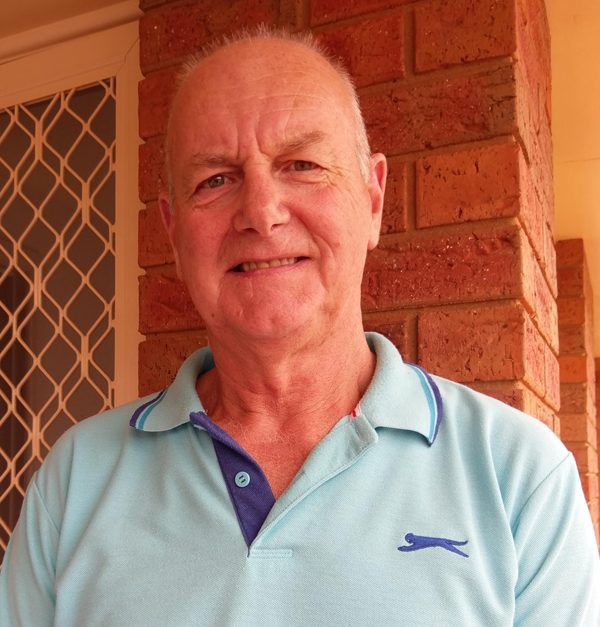
D Dennis Jervis
Dry and Wet Finishing

Dennis Jervis
Dry and Wet Finishing
Years Employed at The Mill: 1969 - 2001 (32 years) Last person to leave Mill. Stayed on to look after the building and stock and machinery. Fabric and blankets from weaving shrunk (and washed for wool grease) in Milling machine Checked for dyeing accuracy. Onto drying machine (tenter) Pinned on either side going through 8 bays of heat - full length like snake twirling through. Taken to raising department on a truck (75 kg a roll lifted by one person) then to dry finishing, nap cut off, brushed and steamed to press around big cylinder. About 8 rolls taken on a truck. Perch was the final check where girls picked up faults – 6 strings for 60 metres allowed – any more would be a seconds. Blankets cut in warehouse (just behind main office) – whip (overlock) or bound with satin. Worked with all owners over time. Quality of produce was great until end when prices were paramount – difference in quality noticeable. Left at factory on own (about 12 months) at the end to look after place and get rid of stock – mainly to Smith Family in Sydney. People did come and steal things, especially at night. Some people fell through roof. There was asbestos which we refused to touch. Had to cover holes and drains so people couldn’t fall in. Played tricks on new people eg go to dye house to get bucket of steam, get a wool bale with a zipper! Redundancies were very sad. Had to let go over 20 workers, particularly older workers. Sacking very different to being made redundant. A couple of people broke down when told. Last one in first one off. Jack Pickettt dropped dead at milling machine from heart attack. Such a nice man. Lived in West Warrnambool – walked for some time, then rode bike. Stood at drying machine to dry off in Winter. Drove eventually at about 19 yo. Had a young worker who couldn’t read or write but strong as an ox. Richard Chandling and I taught him to read and write during morning tea because he wanted his licence which he got. He was so grateful. Dad and Mum (Margaret Byrne) and seven of her siblings and her father Thomas all at one time worked at Mill. They played cricket, hockey, football and basketball. Dad (Wally) got him the job – “start tomorrow”. Told family not staying after a week because of difficult manager. Lindsay Miller had a difficult time as manager as there was a lot of rivalry between some workers. Lindsay well respected.

R Rosemary Kelson
Quality Control

Rosemary Kelson
Quality Control
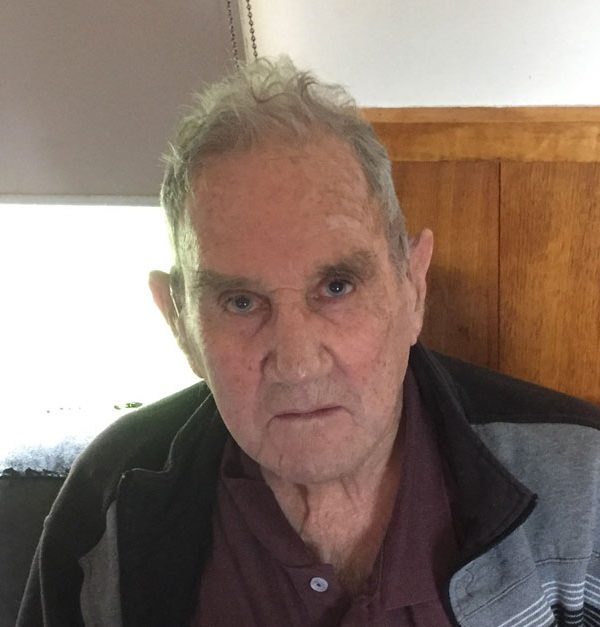
R Ron Kenneally
Electrician

Ron Kenneally
Electrician
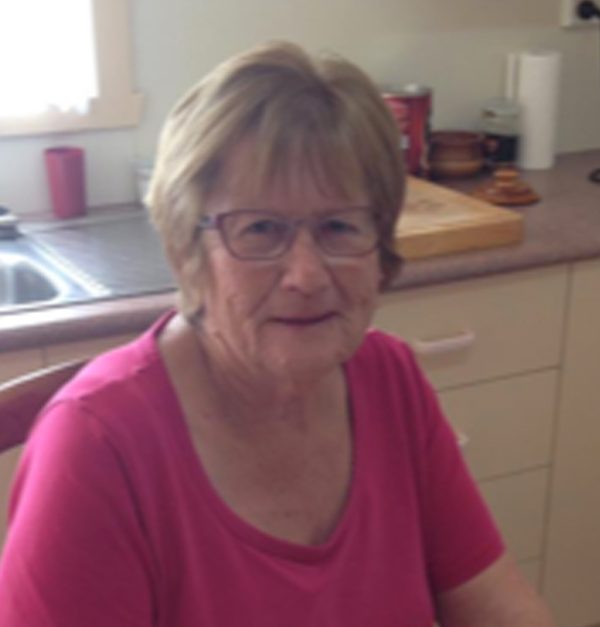
S Shirley Martin
Winding/Warehouse/Mending/Warp Room

Shirley Martin
Winding/Warehouse/Mending/Warp Room
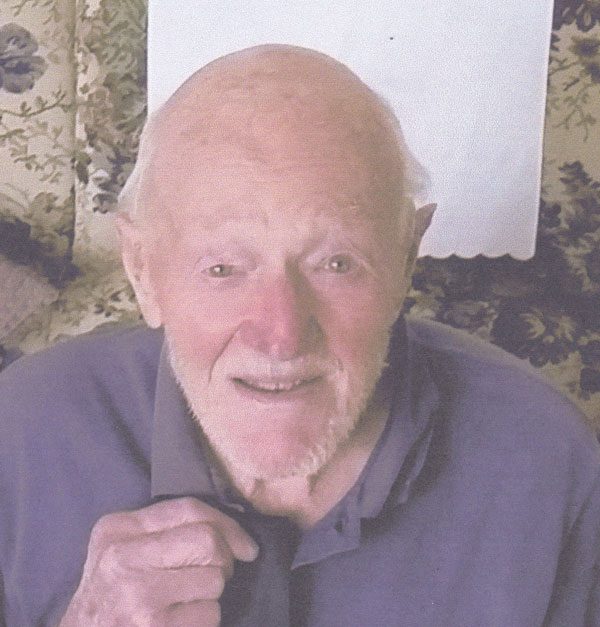
L Lindsay Miller
Collection of production figures/Tour Guide/Production Manager

Lindsay Miller
Collection of production figures/Tour Guide/Production Manager
Years Employed at The Mill: 1943 - 1992 (49 years) Relatives/Friends: Mill Managers - Bill Overend – affectionately known as “Billy the Pig”, Walter Crow, Don Jenkins – until Mill closed Initially worked 7am – 5pm paid 15 - 17 shillings and sixpence. Initially only 2 weeks annual leave then increased to 4 weeks. Good memories of learning about textile manufacturing. Remembers a storm blowing main electric terminal so closing factory for a week and an accident with the boiler causing loss of steam for several days. There was a netball team made up mainly of the McDonald sisters. Also a cricket team. Received a gold watch. Left when too old to work. Many changes over the years. From single shuttle loom to 750 threads/second loom. First memory in 1943 was starting at 7am in the pitch dark, waiting to be taken to where I would work – people going into a dark place like a cave, wondered if they would ever come out! Firstly 44 hour week, 40 hour week then 38 hour week – limited production and because dealing with outside suppliers, rostering was a problem. Demise of industry – doonas versus blankets. 100’s of years in Europe. Doonas more convenient, being light weight with as much warmth as a blanket no matter how good the blanket. Woollen Mill a very big part of Warrnambool’s history Machinery purchased in Britain and workers brought out at beginning of 1900’s.
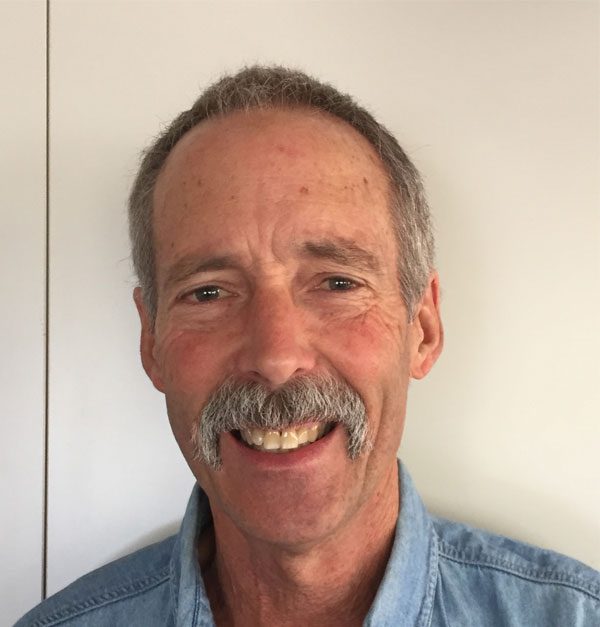
D David McKenzie
Dispatch Clerk Manager of Dreamspun

David McKenzie
Dispatch Clerk Manager of Dreamspun
Was offered job by Foreman of Blanket Finishing and took job because it was clerical. Managers met infrequently – twice a year Went to Melbourne to meet with Sales. Member of Textile Worker’s Union when working as a clerk Only men worked in the warehouse. Only women worked in blanket finishing. Workers at the Mill were genuine – mainly unskilled Christmas Party organised each year but no kids The Mill had a cricket team Walked to work as he lived nearby

N Nancy Moore

Nancy Moore
Pre-war "Had to go to toilet through factory – only one toilet. If consignment was going in the morning the paperwork had to be ready so we worked unpaid overtime sometimes until 10 at night. No street lights. Walked on Harris St because tram track to train station bridge was rough. Tracks went from train station, past Mill down to waterfront. Boss would drive past and not give lift. Walked over bridge at station to get to work in the morning when light. Made beautiful woollen fabric for dresses. The boss would keep some pieces under the counter for the girls for 5 shillings a piece – too much. Only got 21 shillings – 1 pound per week board so only went home every fortnight - 9 pence for bus to Bushfield or Grassmere Horse and jinker was main transport."

D Dennis O’Keefe
Loom Operator/Maintenance-Painting/Truck Driving and Mowing

Dennis O’Keefe
Loom Operator/Maintenance-Painting/Truck Driving and Mowing
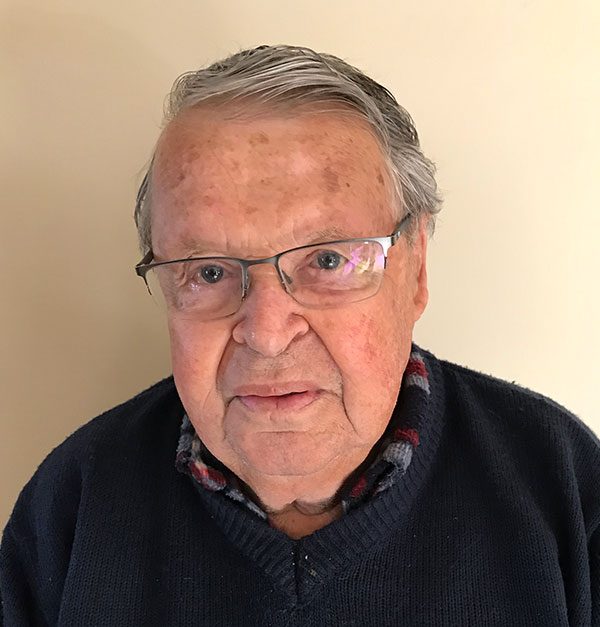
P Pat Quinn
Stacking and collecting empty bobbins from weavers for winders

Pat Quinn
Stacking and collecting empty bobbins from weavers for winders
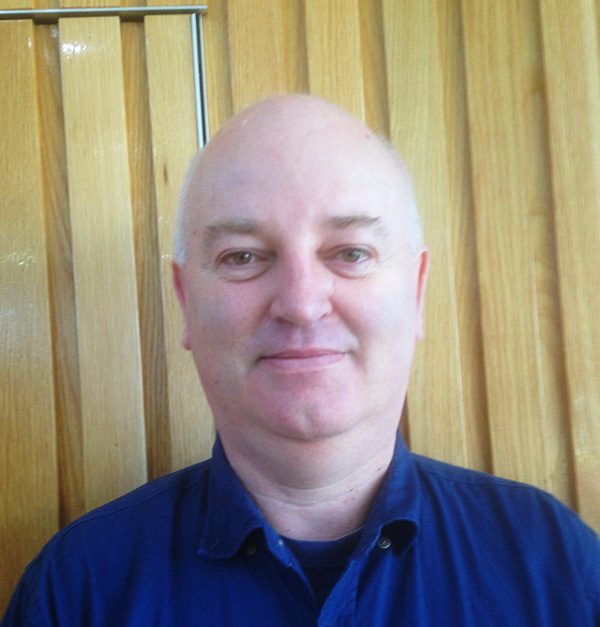
D Darryl Smith
Tufting Acrylic Blanket

Darryl Smith
Tufting Acrylic Blanket
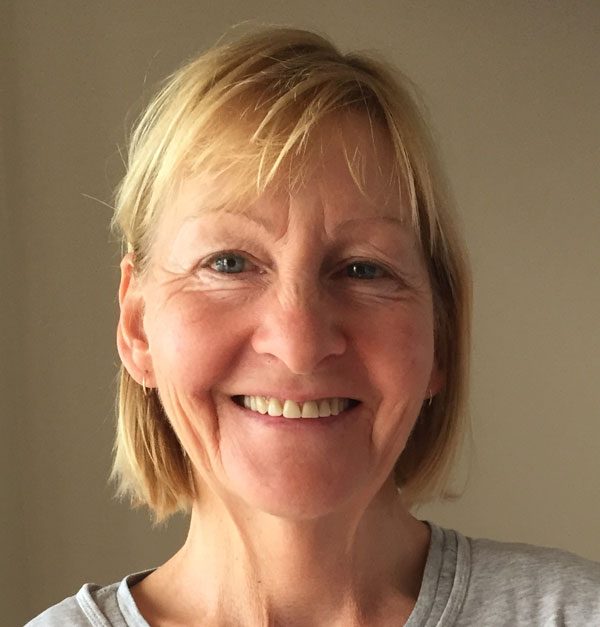
L Leanne Shiells
Warehouse

Leanne Shiells
Warehouse
Years Employed at The Mill: 1976 – 2000 (24 years) Relatives/Friends: Managers – Adrian Payne Dennis Gervis Roger Edwards (Edwards Bridge named after family), Mother – Betty Shiells Each area had a supervisor and a leading hand who would hand out daily work. A lot busier before Smith Family took over Met a lot of people. Was youngest when started. Most women older with families. First job straight from school. Mother worked at Mill and helped Leanne to get job – no interview – start tomorrow. Mum worked at Mill when a kid. Left school at 13/14. Left to have family. Went back when kids at school. Worked nightshift 5 – 10pm in warehouse. Bulk of workforce in warehouse were women. Men would lift large lengths of fabric onto tables. Women would cut blanket lengths on the cutting tables. They put each blanket into a plastic bag then men packed into boxes. Men did the heavy work. Boxes of blankets had about 6 or 7 pairs of blankets – stacked very high. Men and ladies had their own tea rooms. Tea ladies (had other jobs) made cups of tea and took orders for food and brought them back to warehouse. At smoko tea and food would be ready for everyone lined up on a long table. Later you wrote orders yourself before your shift. Only go sometimes to canteen at lunchtime. Had to work hard for the money – small wage to stretch to provide for family. ‘Get on with it’ attitude working at the Mill. When things got tougher, things got quiet (downturns in sales) – horrible feeling of “who will go next”? In the old days people got tartan rugs for their 21st’s. Times have changed and people don’t want blankets now. Worked Saturday morning or an hour after work (overtime) when things got busy. Some friction about people getting/not getting overtime. Not a lot of social time with people from Mill – not a very social person. Caroline Lady and Joan Morrison were friends. Went down to Coles (Parker Arcade) to food bar once a week for lunch when they had 45 mins for lunch. Later had 30 minute lunchtimes. Didn’t maintain friendships very much except Elaine Thomas. Often run into and say hello to people who worked at the Mill. Do housekeeping at a motel and work in school library now.
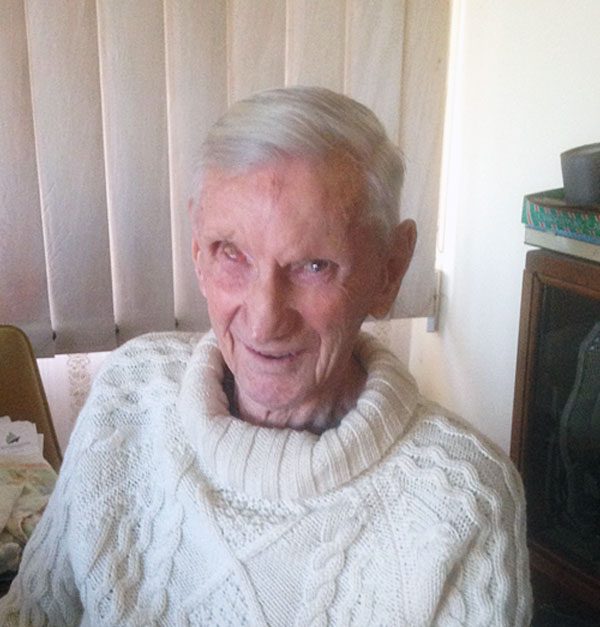
D Donald Tinker
Builder

Donald Tinker
Builder
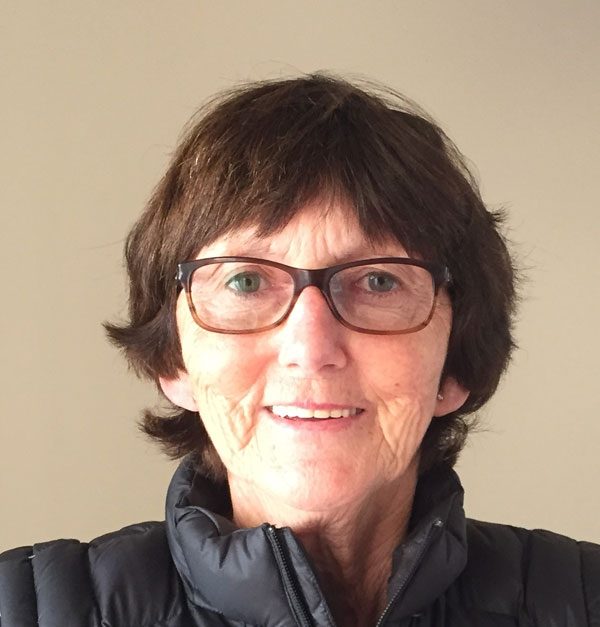
E Elaine Thomas
Winding/Twisting/Warping/Quality Control/Warehouse

Elaine Thomas
Winding/Twisting/Warping/Quality Control/Warehouse
Years Employed at The Mill: 25 years Used to put flowers in packages of blankets. Originally got to warehouse through office. Mill had 3 houses in McDonald St on the corner. Bosses lived in them. Twisters used to make mohair. Elaine came to work in a Mini. Would pick up other ladies. Had to push it sometimes. Loved coming to work. Used to have fun times. Eg. Pancakes for morning tea sometimes. When Smith Family took over there were less people so not so much fun. Huge variety of shifts – 8:00-4:45, 7:00-3:30, 3:30-12, 5:00-10:00 Everyone was in the Textile Union. We had no choice. The Union fought for us when we got retrenched, including sick days.
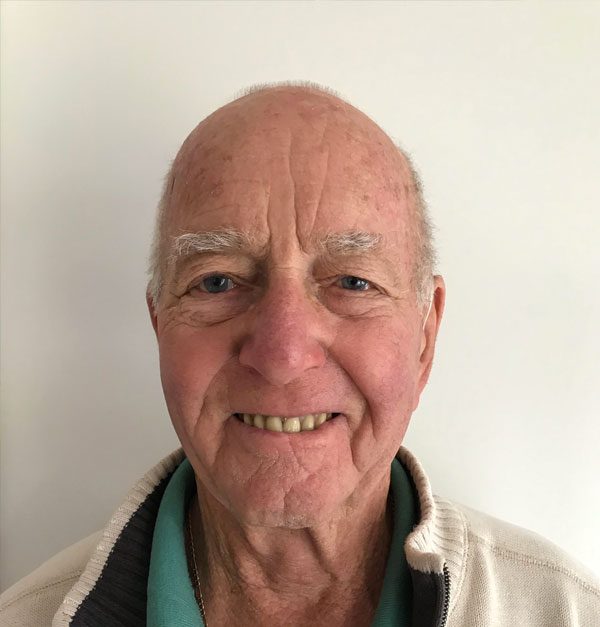
J John Van Baaren
Production Recorder

John Van Baaren
Production Recorder
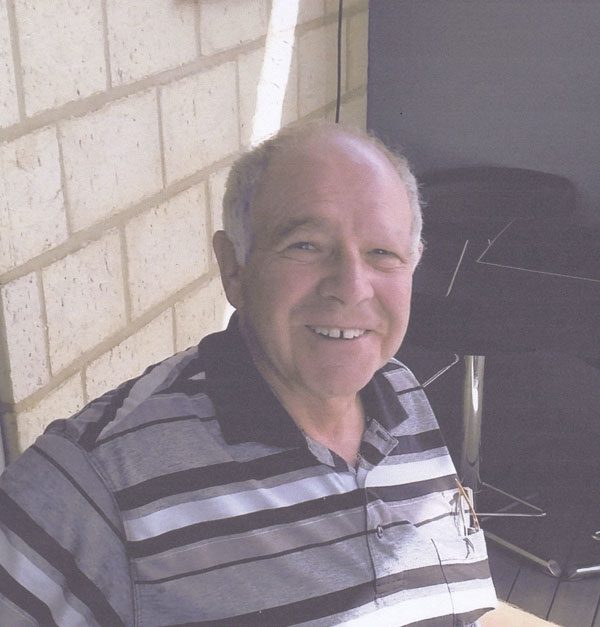
J John Van de Camp
Raising Fabric/Fringing Rugs/Tendering Electric Blankets/Cost Accountant

John Van de Camp
Raising Fabric/Fringing Rugs/Tendering Electric Blankets/Cost Accountant
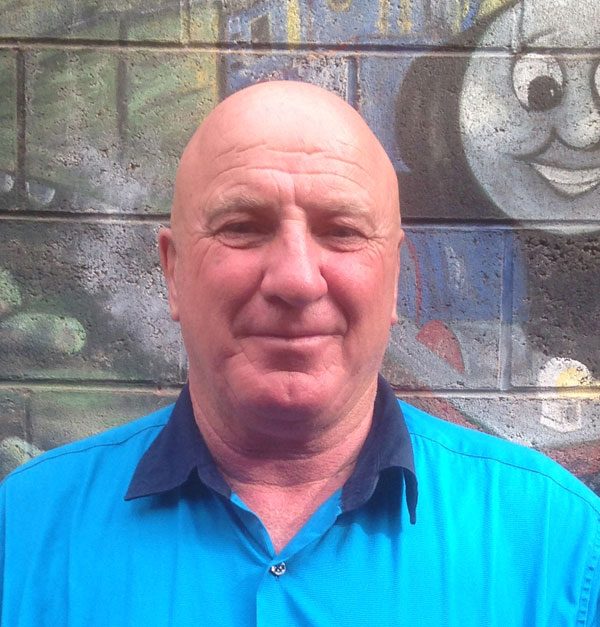
P Peter Wallace Smith
Storeman (picking up mail, ordering goods)

Peter Wallace Smith
Storeman (picking up mail, ordering goods)
I held a number of positions before starting at the mill – these included:
- Luna Park Selling tickets
- Crowd control at night clubs in St Kilda
- Caravan Park attendant at Port Fairy I was the President of the social club and we had many great activities organised such as pool team, trips to the AFL football via bus and Women’s & Men’s cricket. I really liked the aspect of companionship the Mill offered and how they looked out for each other.
The least pleasant memory I have at the Mill was being made redundant as the Mill was closing in 2001.
I held a number of positions before starting at the mill – these included: Luna Park Selling tickets, crowd control at night clubs in St Kilda, caravan Park attendant at Port Fairy.
I unloaded briquettes and wool at the platform by the rail trail. It was an awful job and it was all hands on deck. The briquettes used were brought down by train. Oil and gas were also used as fuel.
The smoke stack was knocked down by some employees when it was not needed any more. I helped pull it down. We did it with two extension ladders tied together. The bricks were curved and hand made. They're underneath the soccer ground now in a pit probably full of asbestos.
The weaving room had night shifts. Three workers took it in turns to go to the pub! The Mill had 770 employees at its maximum production. There were 3 or 4 time clocks around Mill. I never clocked on or off. There were different hours in the storeroom. We produced Euin mothproofed fabric. We added alcohol to waterproof the fabric for both synthetic and natural fabric. There were settling pits in different sections for chemicals then they went into the river and were washed down to the sea. The solid refuse went into bins. Drums of detergent were thrown into the river. The suds came up to the road. There were no boats on the river. We made AFL blankets. We paid the AFL for the logos. We made car upholstery. We produced Army blankets, Police blankets, and Bluey Jackets (waterproof working jackets). The Mill became computerised. A big air-conditioned room contained the mainframe.
The pump house remaining at 25 Roxburgh Crt is original. Maggie Dwyer’s house in Milloo Pl. was the boardroom with a magnificent big table. The memorial is in its original spot. The walkway was called Little Bourke St. as it was very busy. It went right through Mill. Anne and Graham’ Sims house in Milloo Pl overlooking the river was the canteen. The retaining wall was not a landing. It was built to stop erosion. Mr Collins from the City Council went missing. The rumour was that he was in the water tower pond which was used by employees as a swimming pool. The Police investigated but he wasn’t found.
I produced a newsletter called "The Ragtrade". I organised competitive pool games. I ran the flag up and down every day at Shrine. I was the President of the social club and we had many great activities organised such as pool team, trips to the AFL football via bus and Women’s & Men’s cricket. I really liked the aspect of companionship the Mill offered and how they looked out for each other. The least pleasant memory I have at the Mill was being made redundant.